Mark Sisson's Blog, page 191
February 26, 2017
Weekend Link Love – Edition 441
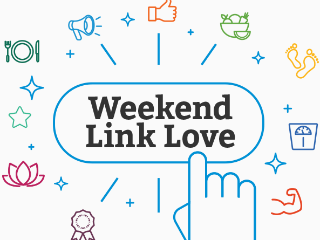 RESEARCH OF THE WEEK
RESEARCH OF THE WEEKChronic cardio linked to low libido in men.
Compressed eating windows work in young men who lift heavy.
In women, red meat deficiency may lead to depression.
Drinking sugary beverages every day only makes you want them more.
Bronze Age women had a thing for steppe horsemen.
Brief bouts of intense stair climbing improve fitness.
We appear to have a malaria vaccine.
NEW PRIMAL BLUEPRINT PODCASTS
Episode 157: Roland and Galina Denzel: Roland and Galina are health experts, fitness coaches, and accomplished authors with a unique perspective on health and wellness.
INTERESTING BLOG POSTS
On pandas, poo, and what it means for you.
The 16 types of play, according to Forest Schools.
The physiological changes that occur on a month-long hike.
MEDIA, SEHMEDIA
Another centenarian, another bacon-lover.
Mr. Glassman goes to Washington.
EVERYTHING ELSE
26,000 years ago, a small child and large dog explored a cave together.
When Europeans first reached British Columbia, almost all the native inhabitants were dead.
Indian strongman smashes coconuts with bare hands.
How different cultures handle madness.
Exposure to junk food is making traditional Siberian people fat.
Sometimes barefoot running in public really is dangerous.
Bad weather in southern Europe is making vegetables pricier in northern Europe.
THINGS I’M UP TO AND INTERESTED IN
Blog post that got me thinking: Are anti-aging and other diet studies seriously compromised by unhealthy subjects and controls?
Good to see media coverage: NYT covers light’s effect on circadian rhythm (and plugs some bulbs that mitigate the issue).
Concept I’m pondering: Have humans always been chasing the technological singularity?
Article I liked: Why are we the only humans around?
Gift idea: Experimental cutlery.
RECIPE CORNER
Pressure cooker chicken pho.
Sticky, crispy orange sriracha chicken bowls.
TIME CAPSULE
One year ago (Feb 26– Mar 4)
Top 14 Ways to Increase Your Metabolism – Rev up those engines.
Beef Bone Broth Variations – Expand your palate.
COMMENT OF THE WEEK
“As Mark Twain said (paraphrasing): If entry into heaven is based on merit, only dogs will get in!”
– Amen, John.

The post Weekend Link Love – Edition 441 appeared first on Mark's Daily Apple.



February 25, 2017
Wonton Soup
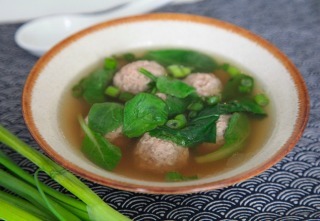 This Primal recipe for wonton soup will save you time and unnecessary carbs. Just skip the wonton wrappers—it’s as simple as that. Instead, roll the ground pork filling into tiny meatballs and drop them directly into a pot of simmering broth. In a few minutes, the juicy little meatballs flavored with tamari, ginger and sesame oil are done. Ladle the gluten-free won ton soup into a bowl, garnish with scallions, and dinner is served.
This Primal recipe for wonton soup will save you time and unnecessary carbs. Just skip the wonton wrappers—it’s as simple as that. Instead, roll the ground pork filling into tiny meatballs and drop them directly into a pot of simmering broth. In a few minutes, the juicy little meatballs flavored with tamari, ginger and sesame oil are done. Ladle the gluten-free won ton soup into a bowl, garnish with scallions, and dinner is served.
The broth for this wonton soup is easy to make and deeply flavorful. Just take chicken stock and simmer briefly with ginger, green onions, and kombu. Kombu is a type of seaweed sold in dried strips. It adds minerals (like iodine, magnesium, manganese and iron) to broth. It also adds very subtle umami flavor. Kombu is a great supplemental food to keep in your panty. It keeps almost indefinitely and can be added to any type of soup without noticeably affecting the flavor. It’s a really easy way to get some of the health benefits of seaweed, without actually eating seaweed.
Servings: 4
Time in the Kitchen: 35 minutes
Ingredients
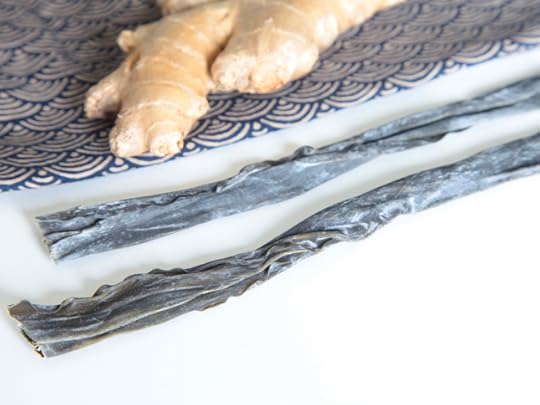
8 cups chicken stock
1 strip kombu
2 green onions, chopped, plus more for garnish
1 2-inch piece of ginger, sliced into thin coins, plus 1 teaspoon grated ginger
1 pound ground pork
2 garlic cloves, finely chopped
3 teaspoons tamari, soy sauce or coconut aminos
½ teaspoon kosher salt
1/2 teaspoon sesame oil
4 small handfuls baby spinach or baby bok choy leaves
Instructions

In a large, wide pot, gently simmer the chicken stock with the strip of kombu, green onions, and the sliced ginger. Simmer for 20 minutes while you prepare the ground pork.
In a medium bowl, combine the ground pork, 1 teaspoon grated ginger, garlic cloves, tamari (or soy sauce, or coconut aminos), salt and sesame oil. Form the meat into small, walnut-sized meatballs, about 22 meatballs.
Drop the meatballs into the pot of simmering broth. Cook 6 to 8 minutes, until meat is no longer pink in the center.
Put a handful of baby spinach or baby bok choy into each serving bowl. Pour the hot broth and meatballs over the greens in each bowl. (The strip of kombu can be removed from the broth and discarded or chopped up and added back to the broth.)
Serve soup with sesame oil, chopped green onions and chili oil, if desired.

The post Wonton Soup appeared first on Mark's Daily Apple.



February 24, 2017
A Few Simple Lifestyle and Diet Changes Have Transformed my Health
It’s Friday, everyone! And that means another Primal Blueprint Real Life Story from a Mark’s Daily Apple reader. If you have your own success story and would like to share it with me and the Mark’s Daily Apple community please contact me here. In fact, I have a contest going right now. So if you have a story to share, no matter how big or how small, you’ll be in the running to win a big prize. Read more here.
 I’ve always had an interest in biology, evolution and how the body works.
I’ve always had an interest in biology, evolution and how the body works.
As a child I loved the idea of being a medical doctor. However, in my teenage years my dreams of becoming a medical doctor started to waver when I discovered that I would often feel faint at the sight of blood.
All hope was not lost, however. After attending a career workshop at the age of 16, I discovered that there were plenty of other ways I could be involved in medicine. I soon became fascinated with the idea of becoming a medical researcher. I was quite taken with the idea of being involved in the discovery and development of cutting edge research that had the potential to change the world.
I was an idealist back then, and I still am now.
While undertaking my undergraduate degree in Biotechnology, I became interested in inflammation and the immune system. I pursued my interest in this field during my PhD and investigated how the immune system was involved in the rejection of corneal grafts.
After completing my PhD, I was lucky enough to land a post-doctoral position at the University of Cambridge, where I worked for four and a half years. Here, I investigated the role that endothelial cells (the cells that line the inside of our blood vessels) play in the inflammatory process in relation to lung disease.
I look back at my research career with fondness. I am proud of my findings and my contribution to medical research. However, the long hours and the competitive nature of the profession made it hard for me to see research as a long-term career option after the birth of my daughter; being a mom had changed my outlook on life.
I had always been so focused on my research career, I had never envisioned myself pursuing another profession. However, as a woman with a child, the odds of landing a coveted tenure-track position were stacked against me. The idea of living from grant to grant became less appealing now that I had a little person relying on me to provide a stable, secure life for her. Even less appealing were the long days in the lab, which every post-doc can relate to.
I wanted more from my life than working all day in the lab. More importantly, I wanted to be a positive role model for my daughter, and my husband and I wanted to create a home environment that would promote a healthy, happy lifestyle for our children.
The desire to pursue a career outside of medical research began to play on my mind, but more on that later.
My Primal Health Journey
My health story isn’t one of massive weight loss, and I don’t have an awesome before and after photo. Don’t get me wrong, my health story does include total body transformation, but my biggest changes were those that most people couldn’t see: my mindset and my digestive health.
I’ve always been an active person. I was a competitive swimmer in my teenage years, and I’ve played Ultimate Frisbee at the international level. However, it wasn’t until I discovered The Primal Blueprint at the age of 29, that I can honestly say that I was healthy.
At face value, my pre-Primal lifestyle may have seemed quite healthy. I went to the gym 2-3 times a week. My favourite classes were cardio blast and spin, and I would play Ultimate Frisbee around 2-3 times a week.
However, pre-Primal Sarah suffered from irritable bowel syndrome, largely due to my terrible diet. I ate low-fat everything, and I proudly boasted about eating a breakfast pizza on my wedding day. Back then I couldn’t tell the difference between bloating and the sensation of feeling full after a meal.
I was at the point where I was ready to do whatever I needed to feel healthy again.
In 2012, my husband and I moved from Adelaide, Australia, to Cambridge, England, and our Primal health journey began the moment our plane landed at Heathrow Airport.
I’m going to admit that I was a total skeptic in the early days. How was eating MORE fat going to help with my bowel problems? And I wasn’t entirely convinced that I wasn’t going to gain weight. Workout less? This didn’t seem right.
The first few weeks of Primal living were tough for me. I suffered from the low-carb flu, which made me irritable and tired, not to mention the added stress that my husband and I were under after moving to a new country and starting new jobs. There were times that I really wanted to pack it in and order a Twister Combo from KFC.
With the guidance and support from my husband, I managed to stay on track with my Primal lifestyle, long enough to notice that my “hanger” was gone, and that I could skip lunch if I was busy with an experiment in the lab—something that I didn’t think was at all possible previously. My bloating was a thing of the past, and I had started to become noticeably leaner. I had become a fat-burning beast without even realizing it!
We saw our move as a fresh start. We had no bad habits to shake, and no temptations sitting in our pantry. It was the perfect opportunity to put our health first, and the best part of all was that we did it together. We cycled or walked everywhere. We replaced soft drinks and juice with cups of tea, and we enjoyed discovering tasty new Primal and paleo recipes.
Without experiencing my very own health transformation, I would have found it difficult to believe that making a few simple lifestyle and diet changes could have such an impact on my health. After years of suffering, my bowel health had healed, my work productivity had increased, and I had become more content with life.
The Beginning of My New Health Coaching Career
Before the birth of my daughter, I had no idea what a health coach was, let alone any idea that I would consider a career in this profession.
My husband and I had been living a Primal lifestyle for about 2 years before I fell pregnant. During this time, no one (at least to my knowledge) ever saw me as a health expert.
I started CrossFit 8 weeks after my daughter was born, and I immediately fell in love with it. My two hours of CrossFit every week were what got me through those first few months of being a parent. I loved the workouts, the heavy lifting and the sense of community that comes with most boxes (CrossFit gyms are referred to as boxes). Most importantly, I was working out because I loved my body, not because I loathed it.
Within 4 months of giving birth to my daughter I actually felt stronger and healthier than I did before my pregnancy, and this was all from living a Primal lifestyle and attending two CrossFit sessions/week.
Friends, colleagues and acquaintances watched me regain my pre-baby health and fitness with relative ease, and I soon found myself being asked health related questions on a daily basis.
What is your health secret? What do you eat? How often do you exercise?
I was amazed and embarrassed that people were asking me for health advice.
Who was I to give anyone health or fitness advice? I wasn’t a nutrition expert or a fitness instructor.
At first I had no idea how to answer these questions, but once I got over the embarrassment of being seen as a health advisor, I realized that I enjoyed sharing my tips on healthy living with anyone who was interested enough to ask. I also realized that my years of working in medical research helped me explain the science behind the Primal concepts, which made it easier for people to understand how the Primal lifestyle works on a physiological level.
And so the idea of becoming a health coach was planted in my mind.
I took my first big step towards my new career when I completed my CrossFit Level 1 Certificate Course. Because CrossFit had made such a difference to my life, I was eager to share this knowledge with other women, especially mommies who may feel intimidated in that kind of environment. After getting my CrossFit trainer qualification, the head coach at CrossFit RNA, Cambridge, UK, took me under his wing and allowed me to help out at the box 1-2 times a week. This is where I fell in love with coaching.
With my confidence growing, I decided to enroll in the Primal Health Coach program. As Primal living had made such a huge impact on my own life, I knew that I wanted to help others achieve their own health goals. Following this, I next enrolled in a personal training course.
I now had a clear vision for my new career. I wanted to start my very own health and fitness business. My business ethos would be to empower women to love their bodies and to become the happiest, healthiest versions of themselves.
Studying, while working as a researcher and looking after my little girl was challenging, but rewarding as I knew what my end goal was.
Taking these initial steps towards my new career as a health and fitness coach was terrifying and exciting. I was on my way to living my dream! Little did I know that it was all going to happen for me very quickly.
I left my medical research career in Cambridge, UK, and moved back to Australia with my husband and daughter. This was when I launched my own health and fitness business Nourish & Lift.
Nourish & Lift started out small. I began by coaching close friends and family, which led to friends of friends coming along, and now my client base is steadily growing. Coaching is my passion and I can honestly say that there is no better buzz than seeing my clients make progress towards their own health goals.
But my story doesn’t end here.
My Health Coach Blog Writing Career
To complement my own health and fitness business, I’m also a freelance blog writer for the Primal Health Coach Program. I feel honored to be given the opportunity to give back to the community that has turned my own life around. Working for the Primal team really is a dream come true.
Leaving my career as a medical researcher was absolutely terrifying, but I can honestly say that it has been the best decision for my family, my health and my career satisfaction. There are times when I felt like I was crazy to give up my academic career. However, I can honestly say that I’m living my dream.
My health coaching story is about going after what you want, following your dreams and turning them into reality. Ultimately, I’m doing what I had always wanted to do as a child. I’m making a difference in the world and having a direct impact on peoples’ health and happiness; the very reason why I wanted to be a medical doctor all those years ago.

The post A Few Simple Lifestyle and Diet Changes Have Transformed my Health appeared first on Mark's Daily Apple.



February 23, 2017
The Personality Factor: How Does Introversion or Extroversion Interact with Well-Being?
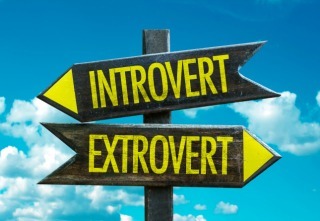 Sometimes it seems like this world is built for extroverts. The most successful politicians, entertainers, and public figures are (or at least come off as) extroverts. One of the “Big 5” personality traits we use to judge and praise people is extraversion (Introversion, falsely assumed as simply the lack of extraversion, doesn’t merit mention.) Certain studies suggest that extroverts make more money than introverts, on average. Extroverts tend to be happier than introverts, regardless of the cultural context. Introverts are more likely to suffer from depression and asthma.
Sometimes it seems like this world is built for extroverts. The most successful politicians, entertainers, and public figures are (or at least come off as) extroverts. One of the “Big 5” personality traits we use to judge and praise people is extraversion (Introversion, falsely assumed as simply the lack of extraversion, doesn’t merit mention.) Certain studies suggest that extroverts make more money than introverts, on average. Extroverts tend to be happier than introverts, regardless of the cultural context. Introverts are more likely to suffer from depression and asthma.
On paper, it seems like extroversion is the clear evolutionary winner. It makes you happier, wealthier, and even healthier (maybe). It’s selected for in many of the most public spheres, like entertainment and politics. So why has introversion been so well preserved? Why do introverts, by most accounts, still comprise at least 25% of the population?
If you could construct the perfect human to innovate, explore, and conquer the world, understand and capitalize on its natural laws, and create powerful technology, you’d insert both adventurousness and circumspection, gregariousness and studiousness. You’d want a balanced person with the capacity to lead, inspire, engage, and act decisively—while also thinking deeply, ruminating, and planning ahead. Few of these superhumans exist, sadly. Those that do tend to excel.
But remember: The success of human populations didn’t just depend on the evolutionary success of each individual human who comprised them, but on the evolutionary success of the group as a whole—the super organism. The collective energy and aptitude.
And what makes for a healthier, more successful tribe?
One composed entirely of extroverts, one composed entirely of introverts, or one with a blend of both? Consider what each brings to the table.
Extroverts are probably more adventurous in many ways. They make friends more easily, act more decisively, and thrive on social energy.
Introverts are more cautious on average. They plan their moves, weigh their options, and often find socializing draining.
In difficult situations, extroverts are better at recruiting different parts of the brain to devise a quick response. Introverts respond relatively slowly to immediate stimuli, but they make up for it with an affinity for deep, focused work and abstract thought.
Getting the right blend of introverts and extroverts in your group imbues the superorganism with the qualities necessary to excel and dominate. You have the planners and the doers. The adventurers who throw caution to the wind and those who warn against foolhardiness.
This isn’t a binary relationship. Introversion and extraversion exist along a spectrum. Most people have elements of each, and the relative propensity appears to be hereditary.
On one level, the world caters to extroverts. We know this from an early age. Introverted toddlers hear “oh, aren’t you shy?” no less than a million times before they reach grade school. Schools stress the importance of “group work,” and often force it on students. The modern school itself is an evolutionary aberration where children are segregated by age and too often have all agency stripped from them.
That’s true.
But the world is also changing. Technology is opening new doors and changing the way we do business (and even life to some extent). There are more opportunities than ever before, and entrepreneurs are taking advantage. Creativity has perhaps never mattered more. Many of the greatest minds were introverted. People value—and deeply need—introverts who can hunker down and do the hard, deep work.
I’m a bit of an introvert. And I’ve done pretty well for myself.
I can give talks and presentations. I can mingle at parties and conferences. I can and do run a business (or three). I do great in small or even large groups of people.
But I need to recharge. I need my alone time. I prefer the company of small groups of close friends and family. I love a good book. I require regular infusions of nature-tinged solitude.
In my experience, there are introverts who accept their disposition, who optimize its strengths and work with its needs, and introverts who deny their nature. The former are happy, well-adjusted, successful, and completely comfortable in their own skin. The latter are lying to themselves. They pine for extroversion and suffer needlessly because of it.
So that’s the first step. Whether you’re more extroverted or more introverted, own it. Accept who you are.
Being an MDA reader, you’re probably wondering how extroversion and introversion can affect your health and life. What are the practical implications of being introverted or extroverted for well-being?
There’s not a ton of great definitive evidence. But we can make a few guesses based on what evidence exists. Regardless, I think there’s potential for some deep and insightful discussion.
Extroverts are more vulnerable to sleep deprivation-induced performance deficits. One study found that after 77 hours of sleep deprivation, extroverts performed poorly on tests of attention and vigilance; sleep-deprived introverts saw less degradation.
An introvert’s cerebral cortex is more active at rest than an extrovert’s. It’s lighting up just by virtue of its existence. This sounds “good,” but it also means most introverts are ruminators. They think, dwell, ponder. More active cortical matter—and thicker cortexes—can also mean overthinking.
An extrovert’s cerebral cortex is less aroused at baseline and requires more input to stimulate it. Socializing is a reliable way to stimulate an extrovert’s brain.
Social contact can be a powerful motivator for extroverts. The neuronal circuitry responsible for making decisions lights up in extroverts; not so much in introverts.
Neither extroversion nor introversion have much effect on a person’s response to training. E/I has no effect on exercise-induced mood changes. I’m curious, though, how introversion/extroversion impacts choice of exercise and other specifics of training preferences.
According to one study, introverts respond better to negative reinforcement. Extroverts respond better to positive reinforcement. But I think there’s more to this story…. Other research suggests introverts tend to be more internally motivated. They might not need the outer push an extrovert benefits from but might respond if there’s a negative incentive (social or otherwise) to keep the peace or because negative reinforcement is more likely to interact with internal motivation/self-image.
On that subject, dopamine reward networks are more active in extroverts. They respond more to external rewards than introverts do. Introverts don’t appear to be as chemically motivated by common rewards in our culture/environment.
On the other hand, some experts suggest introverts tend to respond more to the parasympathetic-associated neurotransmitter, acetylcholine. Powering down might just feel better than getting revved up as a result.
Interestingly, one small study revealed that introverts and extroverts exhibit different blood flow patterns in the brain, with introverts showing increased blood flow patterns in the frontal lobes and in the anterior thalamus and extroverts showing associated patterns in the anterior cingulate gyrus, the temporal lobes and the poster thalamus.
I’d say there’s a lot to unpack here—brain activation in relation to stimuli, emotional processing, motivation approach, etc. While it’s an intricate picture I think we’ll never fully get to the bottom of, it’s good to know we always have fodder for deeper research…and future conversation.
Thanks for reading today, everybody. Here’s where I turn it over to you—where I think anecdotal experience can help augment hard science’s assessment of complex “soft” science questions. Do you consider yourself an introvert or an extrovert (or ambivert—some combination of both)? How has this experience or perception influenced your health choices and life decisions? What resources or questions have been most insightful for you? Take care.

The post The Personality Factor: How Does Introversion or Extroversion Interact with Well-Being? appeared first on Mark's Daily Apple.



February 22, 2017
Long Fasts: Worth the Risk?
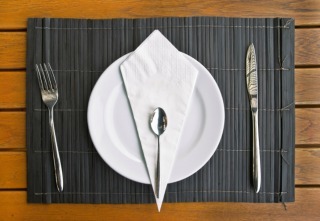 Intermittent fasting, schmittermittent schmasting. The hot new trend is the extended fast—eating nothing and drinking only non-caloric beverages for no less than three days and often as many as 30-40 days. A mere compressed eating window this isn’t.
Intermittent fasting, schmittermittent schmasting. The hot new trend is the extended fast—eating nothing and drinking only non-caloric beverages for no less than three days and often as many as 30-40 days. A mere compressed eating window this isn’t.
If fasting for more than three days sounds riskier than just skipping breakfast, you’re right. Long fasts can get you into trouble. They’re a big commitment. You shouldn’t just stumble into one because it sounds interesting or some guy on your Twitter feed wrote about it.
Skipping a meal or even an entire day of food makes evolutionary sense. We weren’t always successful on the hunt or with foraging. We couldn’t head down to the Trader Joe’s for shrink-wrapped steak, sacks of apples, and jars of honey. Reaching the fed state wasn’t a sure thing. Intermittent fasting—going out of your way to not eat, even though food is available—is a modern contrivance meant to replicate the ancestral metabolic environment.
But long fasts seem more evolutionarily aberrant. The evidence from extant hunter-gatherers, many of whom live on land far more impoverished and limited than our hunter-gatherer ancestors, indicates that outright famine is rare. The Hadza may not eat honey and wildebeest every day, but there’s usually plenty of something to eat.
Are there benefits to the longer fast, though? What’s the purported reasoning behind not eating for days on end?
The Logic of Long-Term Fasting
Weight loss
Back in the 1960s, obesity researchers were quite open to the notion that not eating for long periods of time could combat the results of overeating for long periods of time. The most famous case was of the Scotsman, an obese 27-year-old man clocking in at 456 pounds who, upon asking his doctor for help losing weight, was told to stop eating for a few days. He did it for a week, lost five pounds, and decided to continue the experiment for a total of 382 days. He didn’t do this willy-nilly. He took potassium, sodium, and various vitamins each day. He was under medical supervision for the duration, getting checkups each week.
It worked. After 382 days, he was 180 pounds, having lost 276 pounds. At the five-year checkup, he’d only regained 16. He might have been a bit stocky for the times, but by all accounts this long fast was a huge success. Most dieters nowadays eventually regain most or all of their lost weight.
In another study from the 1960s, 46 obese adults fasted for two weeks. No food, just water and vitamins.
On the good side, they all lost weight—an average of 17.2 pounds (from 7.7 to 31.9 pounds). At the two-year followup, half of them had either kept it all off or regained some of the weight they’d lost. The patients with diabetes enjoyed normal glucose levels throughout the fast and continued to have better glucose control after it had ended.
The bad news is that the other half regained every pound they’d lost or were so embarrassed at their progress that they failed to respond to the followup calls at the two-year mark.
Cancer
Cancer patients typically lose their appetite, and oncologists often prescribe anti-nausea meds to restore it. What if low appetite is adaptive?According to Valter Longo, a cancer researcher from USC, “normal cells” go into survival mode during starvation and display “extreme resistance to stresses” like chemotherapy. If this is the case, extended fasting could improve normal cells’ resistance to harsh cancer treatments.
In one of Longo’s more recent studies, fasting for 3 days improved cancer patients’ resistance to chemotherapy. Leukocytes in those fasting for 48 hours before chemotherapy followed by another 24 after had less DNA damage than those who fasted for just 24 hours. saw less evidence of breaks in their leukocyte DNA. The result is preliminary but promising.
In an older case study (also authored by Longo), a woman with breast cancer underwent four rounds of chemo. The first round came during a six day fast. Other than dry mouth, fatigue, and hiccups, she felt well enough to continue working. For the second and third rounds of chemo, she didn’t fast. She felt awful the entire time, couldn’t work, and complained of severe nausea, fatigue, and pain. She decided to fast for the fourth and final round, which went as well as the first round. Fasting also improved her biomarkers, including white blood cell, platelet, and neutrophil counts.
There’s even a recent case study suggesting that fasting itself might combat cancer directly. In a woman with stage IIIa low-grade follicular lymphoma (non-Hodgkin’s), a 21-day water fast greatly reduced lymph size. She followed a plant-based whole foods diet immediately after, and by month 9 her lymph nodes were still of normal size.
If you’ve got cancer and are interested in long fasts, clear everything with your doctor first.
Immunity
In 2014, researchers used a 3-day fast to protect against damage to the immune system and induce total systemic regeneration of the immune system in mice. Fasting actually triggered the mice’s stem cells to begin production of new blood and immune cells.
A recent report on 6 autoimmune case studies sounds quite promising.
Case 1, rheumatoid arthritis: Symptoms included constant pain in all extremities, extreme fatigue, headaches, and occasional autoimmune conjunctivitis (pink eye). A month after stopping RA meds, the patient fasted for 17 days. Two days in, joint pain had subsided. A week in, all pain was gone and mobility was restored. Electrolytes were stable, and he maintained his progress at follow-up visits.
Case 2, mixed connective tissue disease: Symptoms included severe joint pain, chills, facial edema, weakness, fatigue, myalgia, photosensitivity, and tachycardia. She weaned herself off meds before fasting for 21 days. The first week was rough, but by day 10 she felt better. By 21 days, she had no complaints and remained off her meds. Electrolytes remained stable.
Case 3, fibromyalgia: Symptoms were pain, poor sleep, inability to sustain activity for more than an hour. A 24-day fast cleared them up. Electrolytes were stable.
Case 4, systemic lupus erythematosis: Symptoms were joint pain and skin rashes. Two weeks before the fast, she had weaned completely off her meds. On day 3, she was sleeping poorly and feeling nauseated, but on day 4 she began improving. Joint pain was gone. She cut the fast short after 7 days due to weakness and mild tachycardia, but that was enough—she remained symptom free at one year post-fast.
Cases 5 and 6, rheumatoid arthritis: 12- and 24-day respective fasts fixed symptoms for two patients with RA.
Hypertension
A 2001 study involving 174 patients with hypertension found that a 10-11 day water-only fast led to an average blood pressure reduction of 37 mm HG systolic and 13 mm HG diastolic. Those with severe hypertension (180+ mm HG/110+ mm HG) saw even bigger improvements—a 60/17 mm HG reduction on average.
You might have noticed that many of the cited studies were case studies of single individuals. While it’d be great to have RCTs with placebos and control groups and double-blinding, it’s hard and expensive to get a huge group of people together to fast for 21 days, monitor their vital signs, keep them honest, and ensure their safety. You couldn’t conduct a free-living long fasting study because you’d lose too many to McDonald’s-based attrition. You have to keep people in the facility. That takes a lot of money and manpower.
What Are the Risks?
Loss of lean mass
Any weight loss diet will lead to the loss of lean mass in addition to fat mass. The goal is to minimize the former and maximize the latter. Remember: when most people talk about weight loss, they really mean “fat loss.”
When a slightly overweight, otherwise healthy man drank only water for 44 days, he lost 25.5% of his body mass. A quarter to a third of the loss was body fat, the rest lean mass—mostly muscle.
Nutrient deficiencies
Nothing’s coming in. You’re going to run out of stuff.
In the 44-day fasting study, the subject also developed deficiencies in thiamine, riboflavin, and vitamin K.
A man with non-Hodgkin’s lymphoma fasted for 53 days (he intended 60 days, but couldn’t make it) and ended up with a dangerous neurological condition called Wernicke encephalopathy caused by severe thiamine deficiency.
A woman admitted herself to the hospital after a 40-day water-only fast. She had severe sodium deficiency upon admittance and developed severe deficiencies in magnesium, phosphorus, and potassium upon eating.
Refeeding syndrome
Nutrient requirements drop during a fast. Your body isn’t doing nearly as much as it does when you’re fed, so you can get away with less. Serum levels of basic minerals like magnesium, potassium, and phosphorus remain normal, while intracellular levels drop. But upon refeeding, the situation reverses. Your insulin spikes in response to incoming food. You’re suddenly having to store fat, make and store glycogen, and conduct various other metabolic processes that increase intracellular nutrient requirements. To meet the need, electrolytes move from serum to cells, creating a deficiency on the serum level that can be quite dangerous.
Increased susceptibility to infections
A study in famine victims found that starvation increased susceptibility to infections, particularly malaria. Sometimes the infections were suppressed during the fast and only manifested upon refeeding. Fasting isn’t famine, but it’s similar enough that we should heed the story.
Tips for doing it safely…
Drink green tea during the fast. Purists will scoff at you for ingesting anything but water. Forget them. A 2003 rat study found that green tea protects against the fasting-induced damage to the intestinal lining during a 3-day fast. Remember: these were rat days. In human days, those 3 days are more like 90.
Take MCTs. Tim Ferriss recommends taking medium chain triglyceride oil in the first couple days as a tool to ease your way into a long fast. If you’re already on a ketogenic diet or count yourself as a fat-burning beast with robust fat-burning mitochondria, you can probably skip this.
Take magnesium, calcium, potassium, and sodium. Long fasts seriously perturb electrolyte homeostasis. I vastly prefer getting my electrolytes through a tall glass of Gerolsteiner mineral water (magnesium and calcium) spiked with sea salt (sodium) and lime juice (potassium).
Take thiamine/B-complex. Many studies indicate that fasting depletes thiamine and other vitamins, so stay on top of that. The Scotsman I discussed earlier took a nutritional yeast tab each day, probably for the B vitamin content.
Take vitamin K. A week of fasting depletes vitamin K, which is incredibly problematic if you’re fasting before major surgery. It’s also not great for general health.
Make mineral bone broth. With all the fat strained out, bone broth is quite low in calories and will have a negligible impact on your fast. Throw in a big handful of leafy greens with the stems. I like collards and beet greens, personally. You can either remove the veggies (all the minerals will have gone into the broth) or eat them.
Refeed with a light, low-carb meal. Don’t come off a week-long fast and immediately tuck into a platter of ribs. Don’t refeed with high-carbs. Large meals are difficult to handle after a long fast, and high-carb meals may lead to dangerous levels of fluid retention.
Take two or three days to ease yourself back into your normal routine. Eat smaller, lighter meals. Don’t train too hard. Refeeding syndrome is a real threat.
Have a good reason for doing it. Long fasts are serious, and you should have a serious reason for embarking on one.
Obese? Sure, a long fast with medical supervision and electrolyte and vitamin supplements can work.
Got non-Hodgkin’s lymphoma? If your doctor is on board, a 10-15 day fast might really improve survivability.
Got rheumatoid arthritis or some other autoimmune disease that just doesn’t respond to anything you’ve tried? Maybe a week-long fast will help.
Got invited to a silent meditation/fasting retreat? Go for it.
Does your spiritual practice or religion call for a four day fast? If your faith is important to you and completing this fast is integral to it, you should fast.
But:
If you’re trying to reveal the bottom half of the six-pack you just know is lurking beneath your gut, long fasting is not the answer.
If you’re hoping to shed the last of your baby weight, don’t try a long fast.
If you’re sleeping five hours a night, working twelve hour days, and walk around a frazzled ball of stress, don’t not eat for a week straight.
If you’re fairly healthy and happy and everything’s going well, I’m not sure. Don’t make it a habit. Treat it like a marathon, maybe. A once in a blue moon event you pursue purely for the novelty.
By now, you should have a better grasp of the potential benefits and drawbacks of long fasts. They’re not for everyone or every situation—and I think shorter fasts or compressed eating windows make more sense for most people—but the long fast is an intriguing option that can be safely done if you take the right precautions.
Do you think you’ll try one? Have you tried one? How’d it go?
Let’s hear from you down below. Thanks for reading, everyone.
The post Long Fasts: Worth the Risk? appeared first on Mark's Daily Apple.



February 21, 2017
Some Primal Answers for Kids’ Problem Behaviors
 Last week, Chris Kresser wrote a great article discussing the emerging—and likely causative—link between poor gut health and childhood misbehavior. He explained potential mechanisms for the association, as well as solutions to counter it.
Last week, Chris Kresser wrote a great article discussing the emerging—and likely causative—link between poor gut health and childhood misbehavior. He explained potential mechanisms for the association, as well as solutions to counter it.
But as any parent knows, getting a picky child to adopt your arsenal of perfect gut-supporting foods and supplements isn’t always easy. Not every kid immersed in the righteous anger of the terrible twos will stop what he’s doing to drink sauerkraut juice, nibble on kimchi, take resistant starch, drink kefir and bone broth.. It’s certainly a major part of the problem and the solution, but are there any other dietary causes? What else can a parent try to stem the flood of tantrums?
Ditch artificial food coloring.
Artificial food coloring hijacks the visual system designed to spot ripe fruit. It’s partly why kids gravitate toward bright green, red, yellow, and orange junk food. These colors are attractive to us, in part, because for most of human history they indicated the presence of ripe fruit.
Remember: our color vision also evolved so we could spot venomous snakes lurking in the foliage. Tens of thousands of parents consider these food dyes predators in their own right, swearing their kid goes berserk after a few handfuls of neon candy.
The FDA has even looked into it, admitting that dyes might affect kids with preexisting ADHD. Others think the feds were too cautious (or just plain dishonest), and more recent research has shown that food coloring can affect kids without ADHD, too.
That said, a 2013 study of 8- and 9-year olds in Hong Kong failed to find an effect on behavior, even on high doses of artificial food colors, so it’s not an absolute, universal relationship.
Researchers have proposed a genetic explanation, finding that kids with genetic propensities toward impaired histamine degradation are more likely to have behavioral problems after consuming artificial food coloring. I find this likely, as artificial food coloring causes histamine release.
You could look for “natural” food dyes on nutrition labels. These usually use things like turmeric and paprika to make colors. Or you could just avoid “dyed” foods altogether. Just because your organic gojiberry lollipop uses saffron as a colorant doesn’t make a lollipop a good idea.
Limit sugar.
Is there a sugar crash? Experts say it doesn’t exist. But they also say adult reactive hypoglycemia—where eating refined carbs causes a big spike in blood glucose followed by a sharp decline and extreme fatigue, hunger, and irritability—doesn’t exist, either.
We do know that when blood glucose falls below a certain level, adrenaline is released to liberate body fat and provide energy. A 1995 study found that this effect occurs at a higher blood glucose level in kids compared to adults. The response is also stronger in children. When their bodies sense low energy availability, the adrenaline response is twice as high. That’s why your average child shouldn’t practice IF, and it’s why coming off of a candy bar, Slurpee, or slice of birthday cake hits them harder than it does us.
Not all sugar is the same though. The source matters. One study found that kids who ate more sugar from fruit snacks had a lower risk of ADHD. Total sugar intake had no relation overall.
Sugar-sweetened beverages seem to be the real baddies. They are consistently related to ADHD risk. They’re loaded with sugar in an easily digestible medium; a 40-pound toddler with a bottle of soda can easily ingest 40-50 grams of sugar without even thinking. These often come with the aforementioned artificial food dyes. To boot, they also usually contain caffeine, which is a bad idea for children.
Provide red meat.
I remember being on vacation with the family one year. My daughter was about 3 or 4 and adamant that she go vegetarian “just like Mommy.” Previous to this she was a fairly big meat eater. So for the first week of the trip she avoided meat entirely, instead opting for noodles, rice, and veggies. The tantrums were unbelievable by about the fourth day. Exploding over nothing. Tantrums, in other words. She was eating plenty of calories, so it wasn’t that.
I’d had enough. I went down to the butcher around the corner, bought a steak, brought it back to the condo, and grilled it. She ate it and almost immediately went back to her sweet self. Ever since then I’ve been a big believer in the magical properties of a well-cooked (not well-done) steak.
What about the research?
Meat as an early complementary food boosts head circumference. Unless those infantile carnivores are laying down extra skull for no reason, it’s safe to assume they’re building bigger brains better able to deal with the world rationally. Okay, maybe not rationally. These are kids we’re talking about.
Red meat provides zinc, a crucial nutrient for behavior regulation. Zinc deficiency is involved in the pathogenesis of ADHD. In the above study, meat-borne zinc levels predicted head circumference.
Red meat provides iron, another behavior regulator. One study found that correcting iron deficiency with iron supplements improved behavior in picky eaters.
Red meat provides B vitamins. Deficiencies in B vitamins are associated with behavior problems in teens, and perhaps younger children, too.
Red meat provides protein, and protein provides good blood sugar regulation. Every bite of red meat a toddler eats is something other than a bite of sugary refined carbs.
Provide pastured chicken liver.
Pastured chicken liver is extremely high in iron, folate, choline, B12, and protein, with a decent amount of zinc. And although it is higher in vitamin A than most other foods, it’s lower in vitamin A than other livers, so you can feed it a bit more often—maybe once or twice a week. The real beauty of chicken liver is the taste: it’s far milder than ruminant livers. Your mileage may vary.
Try a dairy-free, gluten-free diet.
Maybe the kid’s already eating this way (since the parents are card-carrying Primal Blueprinters). And there’s a good chance that ditching dairy and grains will have no effect on behavior. The scientific literature is certainly underwhelming. It’s worth a shot though. The anecdotal literature is rife with parents who report behavior problems disappearing once they addressed and resolved food intolerances—and dairy and gluten are fairly common ones.
Give your kid a chance.
Kids can eat well. They will eat well. They don’t have to subsist on hot dogs (grass-fed or not), chicken tenders (gluten-free or not), french fries (fried in tallow or not), and pizza (or meatza). If you give the kid a chance and offer some “adult” options, you’ll probably be surprised at what they try—and like.
Also, let them in the kitchen. Pull up a chair for them to stand on and reach the counter. Let them stir, mash, and even chop. Getting kids involved in food prep won’t just pay off six years down the line when they’re making dinner for the family. It forces them to have skin in the game. They’ll be more likely to want to eat something they had a hand in.
Offer psilocybin.
The emergence of the ego—the toddler’s realization that he or she is a separate being with desires and the executive agency necessary to achieve them—lies at the heart of the terrible twos. A moderate to large dose of psilocybin (or any of the related psychedelics) will destroy the ego, shatter the self, and return the child to an edenic state in congruence with the rest of nature.
Note: I’m kidding about that last one, of course.
But all the rest are legitimate interventions to try. If you have any others that worked for you and your family, let me know below!
Thanks for reading, everyone. Take care.
The post Some Primal Answers for Kids’ Problem Behaviors appeared first on Mark's Daily Apple.



February 20, 2017
Dear Mark: Alternative Therapies Follow-up
 For today’s edition of Dear Mark, I’m answering four questions from last week’s “Alternative Therapies” comment board. I asked you for questions and comments about other potential therapies, and you all put in good work. First, I address that oldest of home remedies: chicken soup. Does it actually cure? Next, I discuss supplementing with humic and fulvic acid. Can the byproducts of rotting plants and mud improve your health? After that, I quickly address a question about the psychiatric merits of psychedelic therapy. I end with a discussion of the merits (or lack thereof) of pet-assisted therapy.
For today’s edition of Dear Mark, I’m answering four questions from last week’s “Alternative Therapies” comment board. I asked you for questions and comments about other potential therapies, and you all put in good work. First, I address that oldest of home remedies: chicken soup. Does it actually cure? Next, I discuss supplementing with humic and fulvic acid. Can the byproducts of rotting plants and mud improve your health? After that, I quickly address a question about the psychiatric merits of psychedelic therapy. I end with a discussion of the merits (or lack thereof) of pet-assisted therapy.
Let’s go:
Hi what happened to the Mother Fix of All Ailments:
Chicken Soup
Oh, definitely. The main reason I didn’t include it is that it’s become quite mainstream.
In vitro research shows that chicken soup can inhibit the neutrophil migration that triggers the onset of common cold symptoms.
If your chicken soup is made from real bones and joints and chicken feet (the secret to broth that gels), it’ll be loaded with glycine. That’s the primary amino acid present in gelatin which promotes more restorative sleep and counters the inflammatory load from excessive amounts of methionine in muscle meat.
Most chicken soup contains garlic, which can also improve a person’s recovery from the common cold. Just make sure to wait five to ten minutes after chopping or crushing the garlic, as this maximizes formation of anti-inflammatory compounds.
Chicken fat is a good source of oleic acid, a precursor to the sleep-inducing oleamide. You need to sleep to recover.
My go-to cold-buster is a pint of bone broth (any animal, but chicken probably tastes best) with an entire head of garlic (crushed ten minutes before adding to broth), simmered until the garlic starts losing its bite. Drink that twice a day at the first hint of anything untoward occurring in your upper respiratory tract.
Has anyone tried supplementing with fulvic acid or humic acid? I just recently have started hearing about it being a great source of trace minerals. Would love to hear anyone’s experience with it if they’ve tried it or even better a full post on it by Mark.
Humic substances, which include humic acid and fulvic acid, are byproducts of plant decomposition. Peat, natural bodies of water, and soil are full of humic substances. They make up a lot of the “bulk” of the stuff we tramp around on whenever we escape the concrete. Brown coal, which is semi-soft rock made of compressed peat, is the densest source of humic and fulvic acid.
Mud bathing is an indirect way to apply topical humic acid with thousands of years of history and decent clinical support. Applying mud, peat, or other humic substances to various body parts really does seem to help, particularly the knee.
Applying a mud pack to the knee improved function and quality of life in osteoarthritis patients. An earlier study also found benefits. In another pair of studies it even lowered CRP, slowed the progression of osteoarthritis, and beat applying heat. The benefits last for at least a year.
That said, studies on oral intake are very scant, with two showing that potassium humate can improve seasonal allergy symptoms and knee osteoarthritis symptoms. It certainly appears to be safe up to about 1.8 grams per day.
Rats who take either fulvic acid or humic acid see lymph node hypertrophy (an indication of immune stimulation; cancer or infection for example stimulate lymph node growth) and become mildly hypothyroid. Other rat research suggests that humic acid increases hypothyroid only in the presence of low iodine intake.
You probably don’t want to mix humic or fulvic acids into your tap water. They interact with chlorine to form toxic disinfectant byproducts.
The jury’s still out on whether it helps as an oral supplement.
Hi Mark, a friend of mine has recently started trying out different alternative therapies for childhood trauma and to improve his relationships with key people in his life, as well as to boost immunity. I’m specifically referring to use of ayahuasca, San Pedro, and Kambo (frog poison). What are your thoughts on the efficacy and safety of these natural medicines?
Psychedelics may represent the next frontier in psychiatric medicine. There’s a ton of research coming down the pipeline, most of it positive/successful. Read my post from last year for my full take on it.
Pet therapy is supposed to work wonders too ???
Pets are built-in best friends. They don’t judge. They can read your emotions, at least if they’re dogs. They can recognize facial expressions. They truly care. Maybe not the same way a human cares, but they’re not some meat computer responding to inputs of liver treats and chin scratches. They really do love.
But the results of actual studies into animal-assisted psychotherapy have been disappointing. While many of the studies report benefits for patients with autism, depression, poor quality of life due to aging, most are highly flawed:
Small sample sizes.
Inadequate control groups.
Failure to control for the initial effect of a novel experience (is it an enduring effect of the dolphin or a temporary change because the kid has never swam with a large marine mammal before and his mind is completely blown?).
Furthermore, it seems the animal therapy field is plagued with the same issues seen in pharmaceutical research: unsuccessful studies tend to go unpublished. The average effect size reported in published studies is almost 3x that of the effect size from unpublished studies.
Still, everything I said in the first paragraph stands. Having a pet can have powerful health and wellness effects, but it’s not therapy per se. It’s more of a vitamin—restoration of something we evolved to require and “expect.” I don’t know if I’d rely on dog visits to cure cancer or anything like that, but it certainly can’t hurt to own a dog (or cat).
That’s it for today, everyone. Thanks for reading. Take care and, as always, leave any comments, questions, or concerns down below.
The post Dear Mark: Alternative Therapies Follow-up appeared first on Mark's Daily Apple.



February 19, 2017
Weekend Link Love – Edition 440
 RESEARCH OF THE WEEK
RESEARCH OF THE WEEKTurns out that humans display a ton of biological and psychological diversity.
Dogs know when you’re being selfish, and they don’t like it.
Baltic hunter-gatherers developed agriculture without outside influence.
Using alcohol to sleep isn’t such a good idea.
Salmonella may have killed the Aztec empire.
Vitamin D protects against cold and flu, especially if you’re deficient.
NEW PRIMAL BLUEPRINT PODCASTS
 Episode 156: Jeff Scot Philips: Jeff Scot Philips reveals all the trickery and misdirection used by the modern food industry.
Episode 156: Jeff Scot Philips: Jeff Scot Philips reveals all the trickery and misdirection used by the modern food industry.
Each week, select Mark’s Daily Apple blog posts are prepared as Primal Blueprint Podcasts. Need to catch up on reading, but don’t have the time? Prefer to listen to articles while on the go? Check out the new blog post podcasts below, and subscribe to the Primal Blueprint Podcast here so you never miss an episode.
What is the Vagus Nerve? (and How Does it Impact Health, Mood, and Performance?)
8 Alternative Therapies Worth Considering
A Primal Look at Gestational Diabetes
INTERESTING BLOG POSTS
Do men need more touch?
MEDIA, SCHMEDIA
“It’s not you, it’s your gut bacteria.”
EVERYTHING ELSE
Buried in the news that scientists are close to resurrecting the wooly mammoth is the fact that we have working artificial wombs.
The American chestnut tree may yet return.
A small software startup is helping people get hooked on apps—and break the addiction.
Co-working at the climbing gym.
Gonna need a translation.
THINGS I’M UP TO AND INTERESTED IN
Contest you don’t want to miss: Win a Passion Planner and 12 Macadamia Sea Salt collagen bars. Enter here or here.
Podcast I liked: Are you eating too much or too little selenium?
Quote that’s resonating: “I don’t mind not knowing. It doesn’t scare me.”—Richard Feynman.
Article whose message hit me hard: Changing the world with more sleep.
Law that could make a big difference: Making school start times no earlier than 8:30.
RECIPE CORNER
Single pan Greek-style fish in a skillet. Love me some single pan recipes.
Serve it with smoky roasted cauliflower. If you don’t have smoked paprika, chipotle powder works, too (but is spicy)..
TIME CAPSULE
One year ago (Feb 19 – Feb 25)
17 Primal Tips for Vegans and Vegetarians – I still care about you.
Primal Rage: How to Manage Unproductive Anger – A lot of anger is anything but righteous..
COMMENT OF THE WEEK
“I’ve eaten so much performance fleece that I saw “Patagonia” written on my poop!”
– You should get paid, Nocona.

The post Weekend Link Love – Edition 440 appeared first on Mark's Daily Apple.



February 18, 2017
Turkish Salad
 In this refreshing salad, herbs are treated as a main ingredient, not a garnish. Fill your salad bowl with parsley, mint and dill (thyme and oregano are also good), either finely chopped or roughly snipped with scissors. The bright and fragrant herbs obviously add color and potent aroma, but there’s more hidden in their leaves… namely antioxidants, plus many other health benefits.
In this refreshing salad, herbs are treated as a main ingredient, not a garnish. Fill your salad bowl with parsley, mint and dill (thyme and oregano are also good), either finely chopped or roughly snipped with scissors. The bright and fragrant herbs obviously add color and potent aroma, but there’s more hidden in their leaves… namely antioxidants, plus many other health benefits.
Don’t get bogged down by memorizing which herbs offer what benefits. Just make a point of regularly enjoying salads like this one that feed your body a variety of fresh herbs. Every recipe for Turkish shepherd’s salad has a slightly different combination of ingredients, but they all strive for refreshing, lively flavor. This Turkish salad combines loads of fresh herbs, tomatoes, bell pepper, cucumber, and red onion with creamy feta and a tangy dressing made from olive oil and pomegranate molasses.
Because it’s loaded with fresh herbs, tomatoes and cucumbers, Turkish shepherd’s salad is often thought of as a summer salad. But go ahead and make it year round. Not only because it’s packed with antioxidants, but also because it’s the perfect cure for a case of the winter’s blues, when you need a taste of summer.
Servings: 4 to 6
Time in the Kitchen: 25 minutes
Ingredients
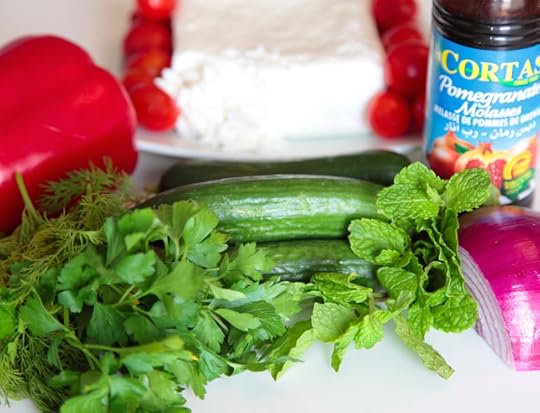
16 ounces cherry tomatoes, halved (450 g)
1 bell pepper, finely chopped
2 small or 1 large cucumber, chopped
½ small red onion, thinly sliced
1 cup chopped or snipped parsley leaves (240 ml)
¼ cup chopped or snipped mint leaves (60 ml)
1 tablespoon chopped dill (15 ml)
1 tablespoon pomegranate molasses (15 ml)
½ teaspoon lemon juice (2.5 ml)
1 clove garlic, finely chopped
¼ cup extra virgin olive oil (60 ml)
¼ teaspoon kosher salt (1.2 ml)
3 grinds black pepper
½ cup crumbled feta (2 ounces/56 g)
Instructions

In a large bowl, gently combine tomatoes, bell pepper, cucumber, red onion, parsley, mint and dill.
In a small bowl, whisk together pomegranate molasses, lemon juice, garlic, olive oil and salt.
Pour the dressing on top of the salad and gently toss. Top the salad with feta.
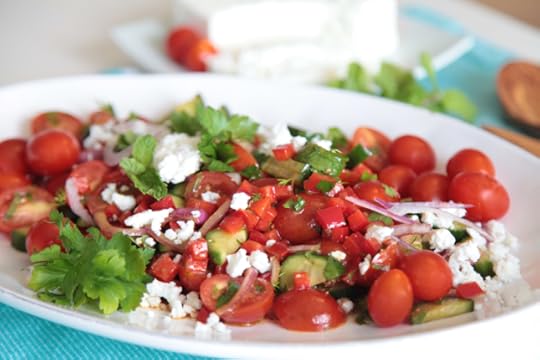

The post Turkish Salad appeared first on Mark's Daily Apple.



February 17, 2017
When You Reprogram Your Genes to Become a Fat-burning Beast, Life Can Be Good!
It’s Friday, everyone! And that means another Primal Blueprint Real Life Story from a Mark’s Daily Apple reader. If you have your own success story and would like to share it with me and the Mark’s Daily Apple community please contact me here. In fact, I have a contest going right now. So if you have a story to share, no matter how big or how small, you’ll be in the running to win a big prize. Read more here.
 It goes like this. I married at 23-years-old (180 pounds), and my wife Joanna and I had 3 kids by the time I was 28-years-old (190 pounds). During the kids’ younger years, we did what everyone else did. Run around with the kids, taking them to this sport and that club meeting. All the while not really paying any attention to ourselves. Fast food for dinner, hamburger, hot dogs, French fries, pizza and soda at the games as we watched. Working hard at our work and bearing the stress of moving up in a growing company, again not paying attention to myself. Long hours, a lot of times sedentary at a desk behind the keyboard. All the hard work payed off in my position at the company, but where did it take me?
It goes like this. I married at 23-years-old (180 pounds), and my wife Joanna and I had 3 kids by the time I was 28-years-old (190 pounds). During the kids’ younger years, we did what everyone else did. Run around with the kids, taking them to this sport and that club meeting. All the while not really paying any attention to ourselves. Fast food for dinner, hamburger, hot dogs, French fries, pizza and soda at the games as we watched. Working hard at our work and bearing the stress of moving up in a growing company, again not paying attention to myself. Long hours, a lot of times sedentary at a desk behind the keyboard. All the hard work payed off in my position at the company, but where did it take me?
I then found myself at 45 years old (217 pounds), miserable and feeling terrible every day. My oldest son Bryan was 21 at the time, and he decided to go into the Army. He went away to basic training at Ft. Benning GA. When he graduated we traveled from NY to GA to be with him. This was a life altering trip for me. During this trip all the pictures that were taken of our family with Bryan fresh out of boot camp all toned up and ready to conquer the world were great. I was taken back by the pictures of myself with him and how overweight I really was. It literally scared me to death, because that’s where I felt I was headed.
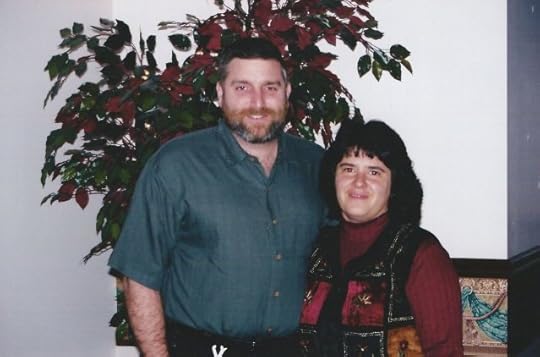
When I got home from that trip I told Joanna I need to take care of myself, so I am here for our kids as they get older. I was in a bad place and the only way out was for me to take the bull by the horns and make it happen. Joanna had bought a workout program from Beach Body called Power 90 by Tony Horton. I had been so inactive for so long this was challenging for me. I started very slow and did not overdo it. I also started eating better and made this my new way of life. The pounds started coming off, I called it my “eat less move more” program. The Power 90 program was actually perfect for me as I got started, not too intense and very doable as I could modify the moves as needed.

Bryan was sent to Korea for his first tour when out of training. When he came back from Korea a year later I wanted to surprise him and be in much better shape than when he went in the Army. I lost about 30 pounds the first year. I felt so much better, and it really put me in the right frame of mind to continue this way of life. I wanted now more than ever to get in the best shape of my life. I was now 46 years young.
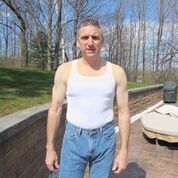 Now feeling better, I needed to up my game and went on to P90X from Beach Body. This is actually when I first heard the name Mark Sisson because he did a piece on the video for the Recovery Drink, which I bought a lot of during this period. I now worked my tail off every day and followed the diet plan and used the supplements. I got the results they said I would get. I went from a size 36” waist to a 32” waist and extra-large shirts to medium shirts. I was now at 162 pounds and felt on top of the world, and nothing could stop me. I lost a total of 55 pounds.
Now feeling better, I needed to up my game and went on to P90X from Beach Body. This is actually when I first heard the name Mark Sisson because he did a piece on the video for the Recovery Drink, which I bought a lot of during this period. I now worked my tail off every day and followed the diet plan and used the supplements. I got the results they said I would get. I went from a size 36” waist to a 32” waist and extra-large shirts to medium shirts. I was now at 162 pounds and felt on top of the world, and nothing could stop me. I lost a total of 55 pounds.
Now at 47 years young I just figured I would keep this up for the rest of my life. Boy, was I wrong! After pushing myself harder and harder, I began to burn out. I just couldn’t keep up the pace. I kept the weight off but started getting injuries that set me back, just attributing it to the fact that I was not as young as I used to be. I continued with some Beach Body programs, but I started looking for something that was more sustainable for me.
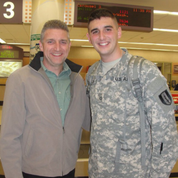
One day I was online and came across Mark’s Daily Apple. I immediately recognized Mark Sisson from the P90X program and started reading what he had to say on the webpage. I was very intrigued and ended up ordering the Primal Blueprint book. Once I got the book I just couldn’t put it down because it made so much sense to me.
I have been following the Primal way of life for over 3 years now. I am 50 years young and absolutely feel the best I have ever felt in my life. I have had so many people ask me how I lost all the weight, but more importantly how I am keeping it off. There is no doubt I did work hard to lose the weight before finding Primal Blueprint, but it is because of Primal Blueprint that I have been able to maintain my weight comfortably. Fitness became such a part of my life I decided to learn more and become an AFAA Certified Personal Fitness Trainer. I still have my full time job but I have been helping friends and relatives work on their goals of weight loss. I am currently working on becoming a Primal Health Coach, I am starting Module #4 as I write this story.

 A couple years ago my daughter Stephanie had twin boys, Aydyn & Jaylyn. They are my motivation now, and I am working hard to stall the effects of aging by following the Primal Blueprint. I have big plans to be around a long time for them and whoever else may come along in the future. I already have them move frequently when they come over and lift heavy things. I call them a couple of little Groksters. We have plans of building them a play area in the yard this summer. The goal is to make this play area not only for them but for all of us so we can play together and benefit everytime we go out there. So we will be calling it our Primal Playground, for kids of all ages.
A couple years ago my daughter Stephanie had twin boys, Aydyn & Jaylyn. They are my motivation now, and I am working hard to stall the effects of aging by following the Primal Blueprint. I have big plans to be around a long time for them and whoever else may come along in the future. I already have them move frequently when they come over and lift heavy things. I call them a couple of little Groksters. We have plans of building them a play area in the yard this summer. The goal is to make this play area not only for them but for all of us so we can play together and benefit everytime we go out there. So we will be calling it our Primal Playground, for kids of all ages.
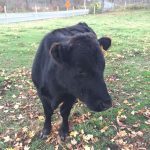 I want to thank Mark Sisson for breaking the mold of conventional wisdom and showing people there is a better way. I feel like I can follow this the rest of my life comfortably and avoid burnout. Not to mention the food is so much better than anything I have ever had. We now are very creative in our cooking and food preparation. We joined the local CSA and frequent the Farmers Market just about every week. We buy pasture raised chickens and farm fresh eggs regularly, since eggs are my favorite breakfast. The last 2 years I have also raised 2 grass fed steer on my neighbor’s farm. Our freezer is full of the best meat money can buy, and it is all local farm raised.
I want to thank Mark Sisson for breaking the mold of conventional wisdom and showing people there is a better way. I feel like I can follow this the rest of my life comfortably and avoid burnout. Not to mention the food is so much better than anything I have ever had. We now are very creative in our cooking and food preparation. We joined the local CSA and frequent the Farmers Market just about every week. We buy pasture raised chickens and farm fresh eggs regularly, since eggs are my favorite breakfast. The last 2 years I have also raised 2 grass fed steer on my neighbor’s farm. Our freezer is full of the best meat money can buy, and it is all local farm raised.
 It has been tough getting everyone in the house to be interested in this way of life but the proof is in the pudding, and I intend to keep steady and to prove the point that when you do the right things and reprogram your genes to become a fat burning beast, life can be good and last a long time. When my kids are eating their pizza and drinking their energy drinks I tell them I am going to pick your nursing home instead of you picking mine. My new line to people is I want to make it to 120, and they say are you nuts, 120 pounds! I then say no—120 years. Live Long, Drop Dead!! I know I have a long way to go, but I am going to give it my all.
It has been tough getting everyone in the house to be interested in this way of life but the proof is in the pudding, and I intend to keep steady and to prove the point that when you do the right things and reprogram your genes to become a fat burning beast, life can be good and last a long time. When my kids are eating their pizza and drinking their energy drinks I tell them I am going to pick your nursing home instead of you picking mine. My new line to people is I want to make it to 120, and they say are you nuts, 120 pounds! I then say no—120 years. Live Long, Drop Dead!! I know I have a long way to go, but I am going to give it my all.
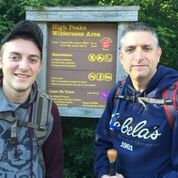 Being fit has allowed me to do so many more things and has enhanced my life tremendously. My youngest Son Tony got interested in hiking and wanted to climb the Adiriondack NY High Peaks. There are 46 peaks over 4,000 Ft in elevation. If you climb them all you attain the rank of 46er. We began a couple years ago and now have 7 summits under our belts. Joanna even joined us for one, a great family day out. Once we get to the summit I pull off a set of max rep pushups. Its awesome when you feel like you are on the top of the world!
Being fit has allowed me to do so many more things and has enhanced my life tremendously. My youngest Son Tony got interested in hiking and wanted to climb the Adiriondack NY High Peaks. There are 46 peaks over 4,000 Ft in elevation. If you climb them all you attain the rank of 46er. We began a couple years ago and now have 7 summits under our belts. Joanna even joined us for one, a great family day out. Once we get to the summit I pull off a set of max rep pushups. Its awesome when you feel like you are on the top of the world!
My Father at 77 years young was having knee problems and needed full knee replacement surgery. Prior to surgery he wanted to get himself as fit as possible to minimize his recovery time. I gave him my Primal Blueprint book and put him to task reading and learning about becoming a fat burning beast. Of course he had watched my transformation but was still a little skeptical about the whole eat more fat thing. Once he digested what he read in the Primal Blueprint he put it into action.
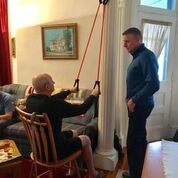 He was 185 pounds when he began, and when he was preparing for his knee surgery he was 155 pounds. He lost a total of 30 pounds following the Primal Blueprint and could not believe the energy he had out on the golf course. He traded his oatmeal breakfast and peanut butter and jelly snacks in for bacon & eggs that ended up getting him through the whole front 9 with plenty of energy to spare. Here I am helping Dad with some upper body strength training after surgery. His knee is coming along fine also. It’s amazing how they can replace parts now a days. He has a golf date coming up in April, and I think he will make it.
He was 185 pounds when he began, and when he was preparing for his knee surgery he was 155 pounds. He lost a total of 30 pounds following the Primal Blueprint and could not believe the energy he had out on the golf course. He traded his oatmeal breakfast and peanut butter and jelly snacks in for bacon & eggs that ended up getting him through the whole front 9 with plenty of energy to spare. Here I am helping Dad with some upper body strength training after surgery. His knee is coming along fine also. It’s amazing how they can replace parts now a days. He has a golf date coming up in April, and I think he will make it.
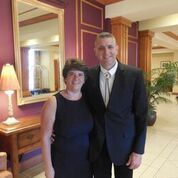 I one day would like to meet Mark Sisson and tell him how much I appreciate all he has done for me with this program. Maybe I can make it to a future Primal Con.
I one day would like to meet Mark Sisson and tell him how much I appreciate all he has done for me with this program. Maybe I can make it to a future Primal Con.
Thanks for listening to my story!!
The post When You Reprogram Your Genes to Become a Fat-burning Beast, Life Can Be Good! appeared first on Mark's Daily Apple.



Mark Sisson's Blog
- Mark Sisson's profile
- 199 followers




